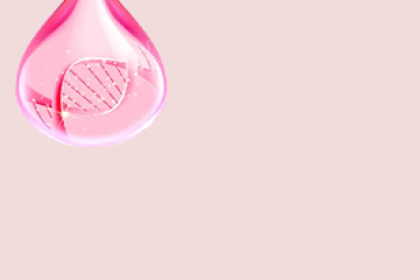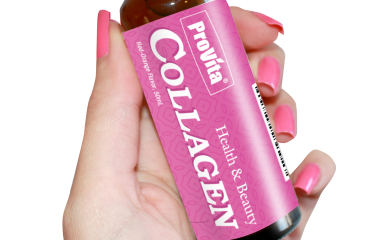
Collagen is a bioactive ingredient that improves skin properties to achieve an optimal skin condition. Collagens are the major structural element of all connective tissues, such as skin, bone, cartilage and tendons. They contribute to the stability of tissues and organs and maintain their structural integrity (1). Collagens are centrally involved in the formation of fibrillar and microfibrillar networks of the extracellular matrix, basement membranes as well as other structures of the extracellular matrix. There are 20 different types of collagen. Collagen VII plays a major role in skin regeneration. A marked loss of fibrillin-positive structures as well as a reduced content of collagen type VII (Col-7), may contribute to wrinkles by weakening the bond between dermis and epidermis of extrinsically age skin. Anchoring function of certain collagen types could contribute to the formation of scaffolds promoting tissue repair or regeneration (2). In older skin, collagen looks irregular and disorganized the ratio of Col-3, to Col-1 has been shown to increase, due, significantly, to a loss of Col-1. The overall collagen content per unit area of the skin surface is known to decline approximately 1%/year (3). Collagen degradation and disturbed metabolism are important in the course of osteoarthritis and osteoporosis. The total hyaluronic acid (HA) level in the dermis of skin that age intrinsically remains stable; however, epidermal HA diminishes markedly.

References
1. Ganceviciene, R., Liakou, A. I., Theodoridis, A., Makrantonaki, E., & Zouboulis, C. C. (2012). Skin anti-aging strategies. Dermato-endocrinology, 4(3), 308-319
2. Avila Rodríguez, M. I., Rodríguez Barroso, L. G., & Sánchez, M. L. (2018). Collagen: A review on its sources and potential cosmetic applications. Journal of cosmetic dermatology, 17(1), 20-26
3. Rogers, H. J., Weidmann, S. M., & Parkinson, A. (1952). Studies on the skeletal tissues. 2. The collagen content of bones from rabbits, oxen and humans. Biochemical Journal, 50(4), 537



